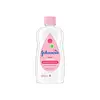What's inside
What's inside
 Key Ingredients
Key Ingredients

No key ingredients
 Benefits
Benefits

No benefits
 Concerns
Concerns

 Ingredients Side-by-side
Ingredients Side-by-side

Water
Skin ConditioningZinc Oxide
Cosmetic ColorantIsopropyl Palmitate
EmollientDicaprylyl Carbonate
EmollientLanolin
EmollientC12-15 Alkyl Benzoate
AntimicrobialGlycerin
HumectantPolyglyceryl-2 Dipolyhydroxystearate
Skin ConditioningButyrospermum Parkii Butter
Skin ConditioningPolyglyceryl-3 Diisostearate
EmulsifyingMagnesium Sulfate
Avena Sativa Kernel Extract
AbrasiveGlycine Soja Oil
EmollientHelianthus Annuus Seed Oil
EmollientOlea Europaea Leaf Extract
PerfumingMagnesium Aspartate
Skin ConditioningPotassium Aspartate
Skin ConditioningSarcosine
Skin ConditioningTocopheryl Acetate
AntioxidantPropylene Glycol
HumectantSodium Cocoyl Amino Acids
CleansingZinc Stearate
Cosmetic ColorantTocopherol
AntioxidantPotassium Sorbate
PreservativeParfum
MaskingWater, Zinc Oxide, Isopropyl Palmitate, Dicaprylyl Carbonate, Lanolin, C12-15 Alkyl Benzoate, Glycerin, Polyglyceryl-2 Dipolyhydroxystearate, Butyrospermum Parkii Butter, Polyglyceryl-3 Diisostearate, Magnesium Sulfate, Avena Sativa Kernel Extract, Glycine Soja Oil, Helianthus Annuus Seed Oil, Olea Europaea Leaf Extract, Magnesium Aspartate, Potassium Aspartate, Sarcosine, Tocopheryl Acetate, Propylene Glycol, Sodium Cocoyl Amino Acids, Zinc Stearate, Tocopherol, Potassium Sorbate, Parfum
 Reviews
Reviews

Ingredients Explained
These ingredients are found in both products.
Ingredients higher up in an ingredient list are typically present in a larger amount.
Parfum is a catch-all term for an ingredient or more that is used to give a scent to products.
Also called "fragrance", this ingredient can be a blend of hundreds of chemicals or plant oils. This means every product with "fragrance" or "parfum" in the ingredients list is a different mixture.
For instance, Habanolide is a proprietary trade name for a specific aroma chemical. When used as a fragrance ingredient in cosmetics, most aroma chemicals fall under the broad labeling category of “FRAGRANCE” or “PARFUM” according to EU and US regulations.
The term 'parfum' or 'fragrance' is not regulated in many countries. In many cases, it is up to the brand to define this term.
For instance, many brands choose to label themselves as "fragrance-free" because they are not using synthetic fragrances. However, their products may still contain ingredients such as essential oils that are considered a fragrance by INCI standards.
One example is Calendula flower extract. Calendula is an essential oil that still imparts a scent or 'fragrance'.
Depending on the blend, the ingredients in the mixture can cause allergies and sensitivities on the skin. Some ingredients that are known EU allergens include linalool and citronellol.
Parfum can also be used to mask or cover an unpleasant scent.
The bottom line is: not all fragrances/parfum/ingredients are created equally. If you are worried about fragrances, we recommend taking a closer look at an ingredient. And of course, we always recommend speaking with a professional.
Learn more about Parfum